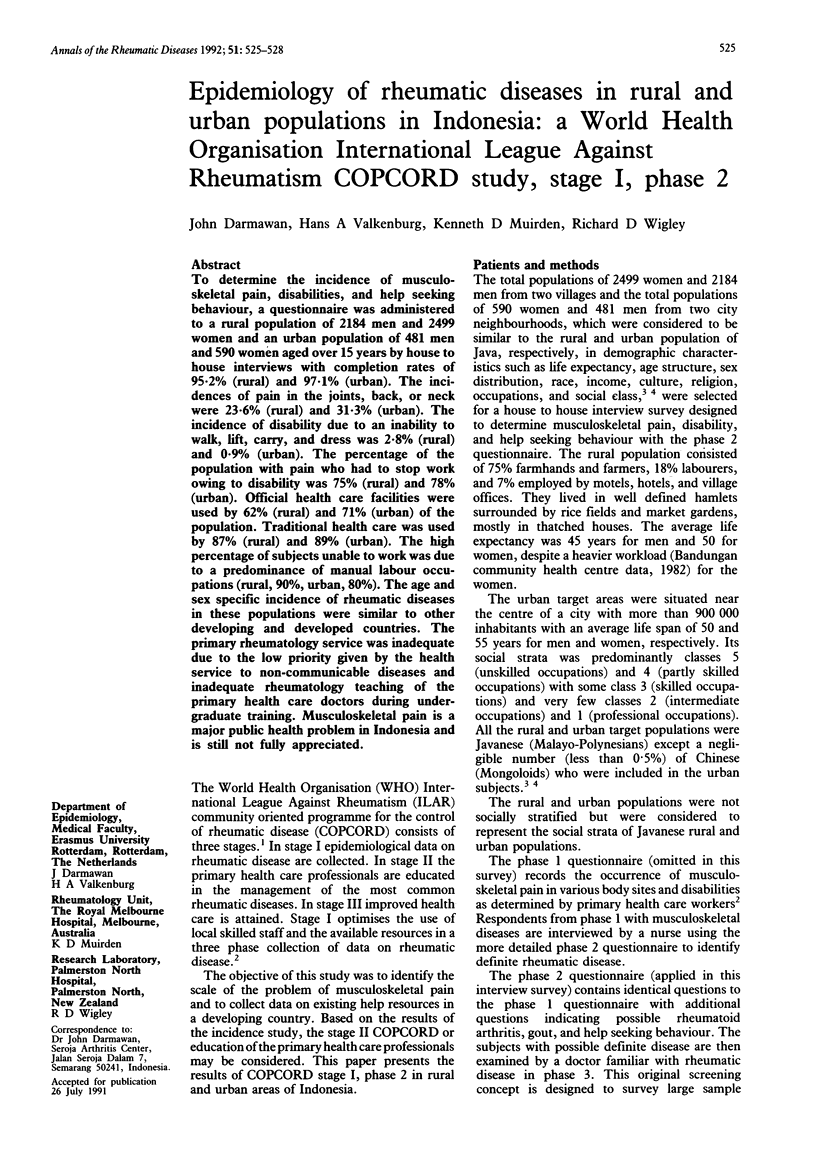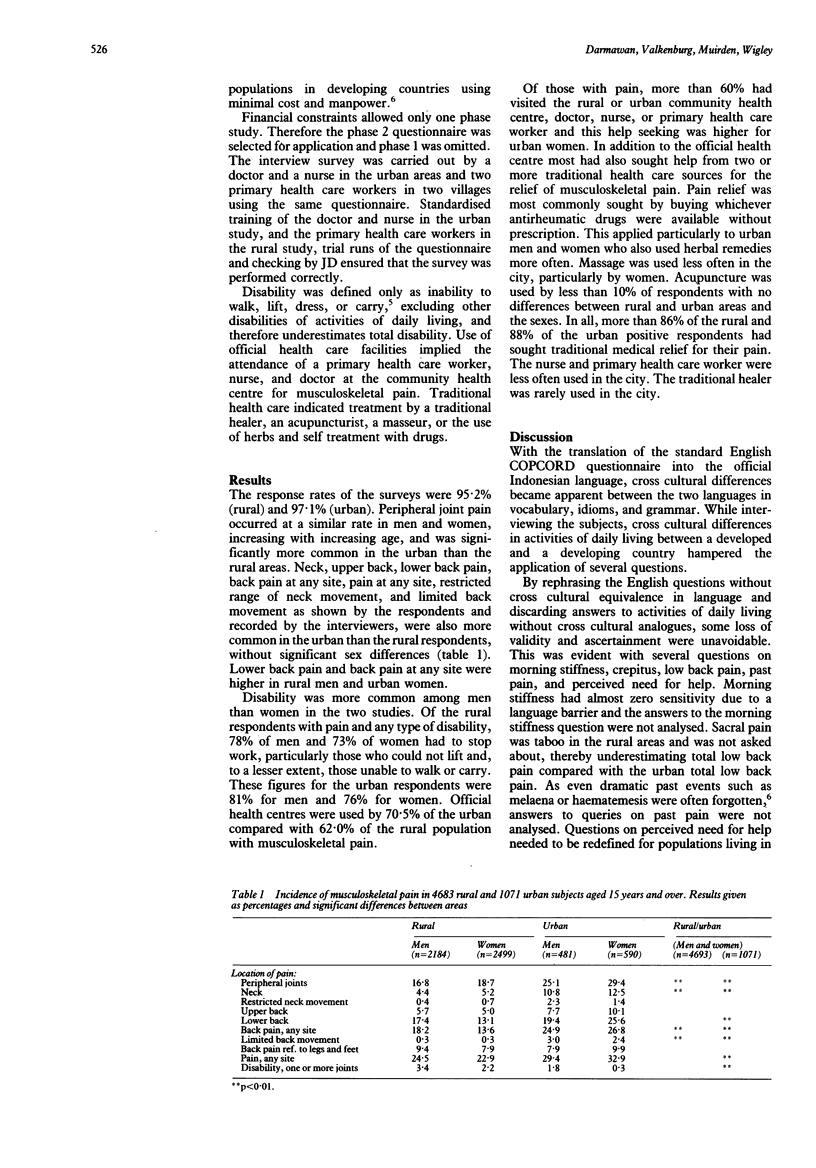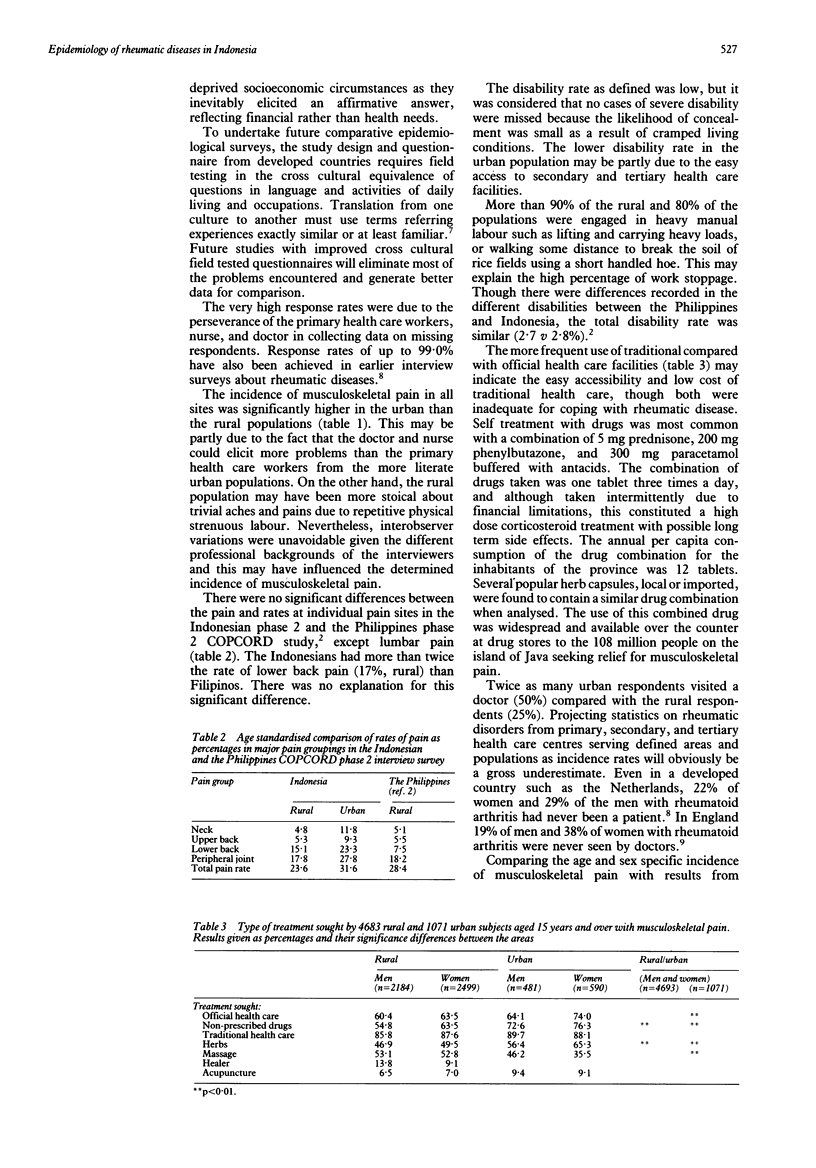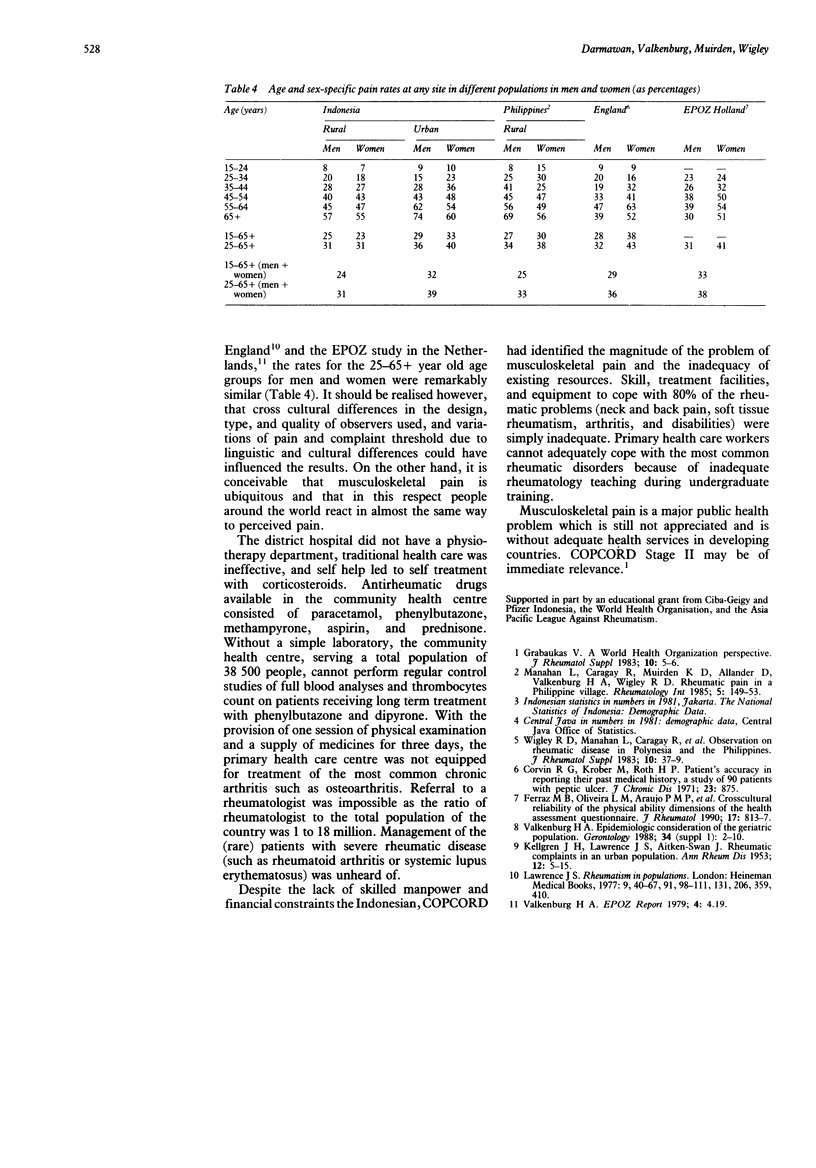Abstract
To determine the incidence of musculoskeletal pain, disabilities, and help seeking behaviour, a questionnaire was administered to a rural population of 2184 men and 2499 women and an urban population of 481 men and 590 women aged over 15 years by house to house interviews with completion rates of 95.2% (rural) and 97.1% (urban). The incidences of pain in the joints, back, or neck were 23.6% (rural) and 31.3% (urban). The incidence of disability due to an inability to walk, lift, carry, and dress was 2.8% (rural) and 0.9% (urban). The percentage of the population with pain who had to stop work owing to disability was 75% (rural) and 78% (urban). Official health care facilities were used by 62% (rural) and 71% (urban) of the population. Traditional health care was used by 87% (rural) and 89% (urban). The high percentage of subjects unable to work was due to a predominance of manual labour occupations (rural, 90%, urban, 80%). The age and sex specific incidence of rheumatic diseases in these populations were similar to other developing and developed countries. The primary rheumatology service was inadequate due to the low priority given by the health service to non-communicable diseases and inadequate rheumatology teaching of the primary health care doctors during undergraduate training. Musculoskeletal pain is a major public health problem in Indonesia and is still not fully appreciated.
Full text
PDF



Selected References
These references are in PubMed. This may not be the complete list of references from this article.
- Corwin R. G., Krober M., Roth H. P. Patients' accuracy in reporting their past medical history, a study of 90 patients with peptic ulcer. J Chronic Dis. 1971 May;23(12):875–879. doi: 10.1016/0021-9681(71)90016-6. [DOI] [PubMed] [Google Scholar]
- Ferraz M. B., Oliveira L. M., Araujo P. M., Atra E., Tugwell P. Crosscultural reliability of the physical ability dimension of the health assessment questionnaire. J Rheumatol. 1990 Jun;17(6):813–817. [PubMed] [Google Scholar]
- Grabauskas V. A World Health Organization perspective. J Rheumatol Suppl. 1983 Nov;10:5–6. [PubMed] [Google Scholar]
- KELLGREN J. H., LAWRENCE J. S., AITKEN-SWAN J. Rheumatic complaints in an urban population. Ann Rheum Dis. 1953 Mar;12(1):5–15. doi: 10.1136/ard.12.1.5. [DOI] [PMC free article] [PubMed] [Google Scholar]
- Manahan L., Caragay R., Muirden K. D., Allander E., Valkenburg H. A., Wigley R. D. Rheumatic pain in a Philippine village. A WHO-ILAR COPCORD Study. Rheumatol Int. 1985;5(4):149–153. doi: 10.1007/BF00541515. [DOI] [PubMed] [Google Scholar]
- Valkenburg H. A. Epidemiologic considerations of the geriatric population. Gerontology. 1988;34 (Suppl 1):2–10. doi: 10.1159/000212980. [DOI] [PubMed] [Google Scholar]
- Wigley R. D., Manahan L., Caragay R., Muirden K. D., Valkenberg H. A., Allander E., Prior I. A. Observations on rheumatic disease in Polynesia and the Philippines. J Rheumatol Suppl. 1983 Nov;10:37–40. [PubMed] [Google Scholar]


